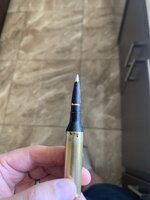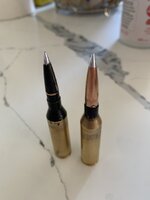Able to chamber the brass but no able to chamber the loaded rounds on twice fired brass
1. FL resized the brass and bumped shoulder 2-4/1000
2. Able to chamber the brass after FL sizing and shoulder bump.
3. Measured the CBTG=2.895 and loaded 230 gr a tip at 2.85. I am able to chamber the rounds with once fired brass, but not able to chamber the twice fired brass ( even I am able to chamber the brass; all rounds r loaded and 2.85.) I can’t figure out why.
4. Also I noticed the primer pocket on twice fired brass is a bit loose comparing to once fired brass, which is expected.
Any suggestion?
1. Norma Mag bras Fired once and twice.
2. Bullet: Hornady A tip 230 grain
3. Redding competition S die sets
4. FL sizing with shoulder bump 2-4/1000
1. FL resized the brass and bumped shoulder 2-4/1000
2. Able to chamber the brass after FL sizing and shoulder bump.
3. Measured the CBTG=2.895 and loaded 230 gr a tip at 2.85. I am able to chamber the rounds with once fired brass, but not able to chamber the twice fired brass ( even I am able to chamber the brass; all rounds r loaded and 2.85.) I can’t figure out why.
4. Also I noticed the primer pocket on twice fired brass is a bit loose comparing to once fired brass, which is expected.
Any suggestion?
1. Norma Mag bras Fired once and twice.
2. Bullet: Hornady A tip 230 grain
3. Redding competition S die sets
4. FL sizing with shoulder bump 2-4/1000


